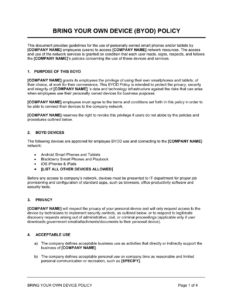As businesses rely more and more on remote work, securing remote access is essential. A remote access control policy template provides a framework for setting up secure remote access, ensuring compliance with regulations, and protecting sensitive data.
An effective remote access control policy should define the responsibilities of employees and IT personnel, outline the requirements for authentication and authorization, and specify the security measures that must be implemented. It should also address issues such as BYOD (bring your own device) policies, data encryption, and regular security audits.
Key Components of a Remote Access Control Policy Template
1. Roles and Responsibilities: Clearly define the roles and responsibilities of employees and IT personnel in implementing and maintaining secure remote access. This includes setting up access controls, monitoring activity, and responding to security incidents.
2. Authentication and Authorization: Specify the authentication mechanisms that employees must use to access remote systems, such as passwords, PINs, two-factor authentication, and biometric authentication. Also, define the authorization process for granting access to specific resources and systems.
3. Security Measures: Outline the security measures that must be implemented to protect remote access, including encryption of data in transit and at rest, regular security updates, and intrusion detection and prevention systems.
4. BYOD Policies: If employees are allowed to use their own devices for remote access, establish clear policies regarding device security, data protection, and access restrictions.
Implementing and Maintaining a Remote Access Control Policy Template
1. Training and Awareness: Provide training to employees and IT personnel on the remote access control policy, ensuring that everyone understands their roles and responsibilities. Regularly conduct awareness campaigns to keep security top of mind.
2. Continuous Monitoring: Implement tools and processes to continuously monitor remote access activity, detect suspicious behavior, and respond promptly to security incidents.
3. Regular Audits and Reviews: Regularly audit the implementation of the remote access control policy and review its effectiveness. Make necessary adjustments to keep up with evolving security threats and regulatory changes.
4. Employee Accountability: Hold employees accountable for complying with the remote access control policy. This may include disciplinary action for violations.
Conclusion
A remote access control policy template is a valuable tool for businesses to establish secure and compliant remote access practices. By implementing and maintaining a comprehensive remote access control policy, organizations can protect their sensitive data, ensure regulatory compliance, and maintain a secure remote workforce.
Regularly reviewing and updating the policy based on evolving security threats and regulatory changes is crucial to stay protected and mitigate potential risks associated with remote access.
FAQ
What is the purpose of a remote access control policy template?
A remote access control policy template provides a framework for businesses to establish secure and compliant remote access practices, protecting sensitive data and ensuring regulatory compliance.
What key components should be included in a remote access control policy template?
Key components of a remote access control policy template include roles and responsibilities, authentication and authorization, security measures, BYOD policies, implementation and maintenance guidelines, and employee accountability.
How can businesses ensure compliance with regulations and standards when using a remote access control policy template?
Businesses can ensure compliance with regulations and standards by regularly reviewing and updating the remote access control policy based on evolving security threats and regulatory changes, conducting regular audits and reviews, and holding employees accountable for complying with the policy.
